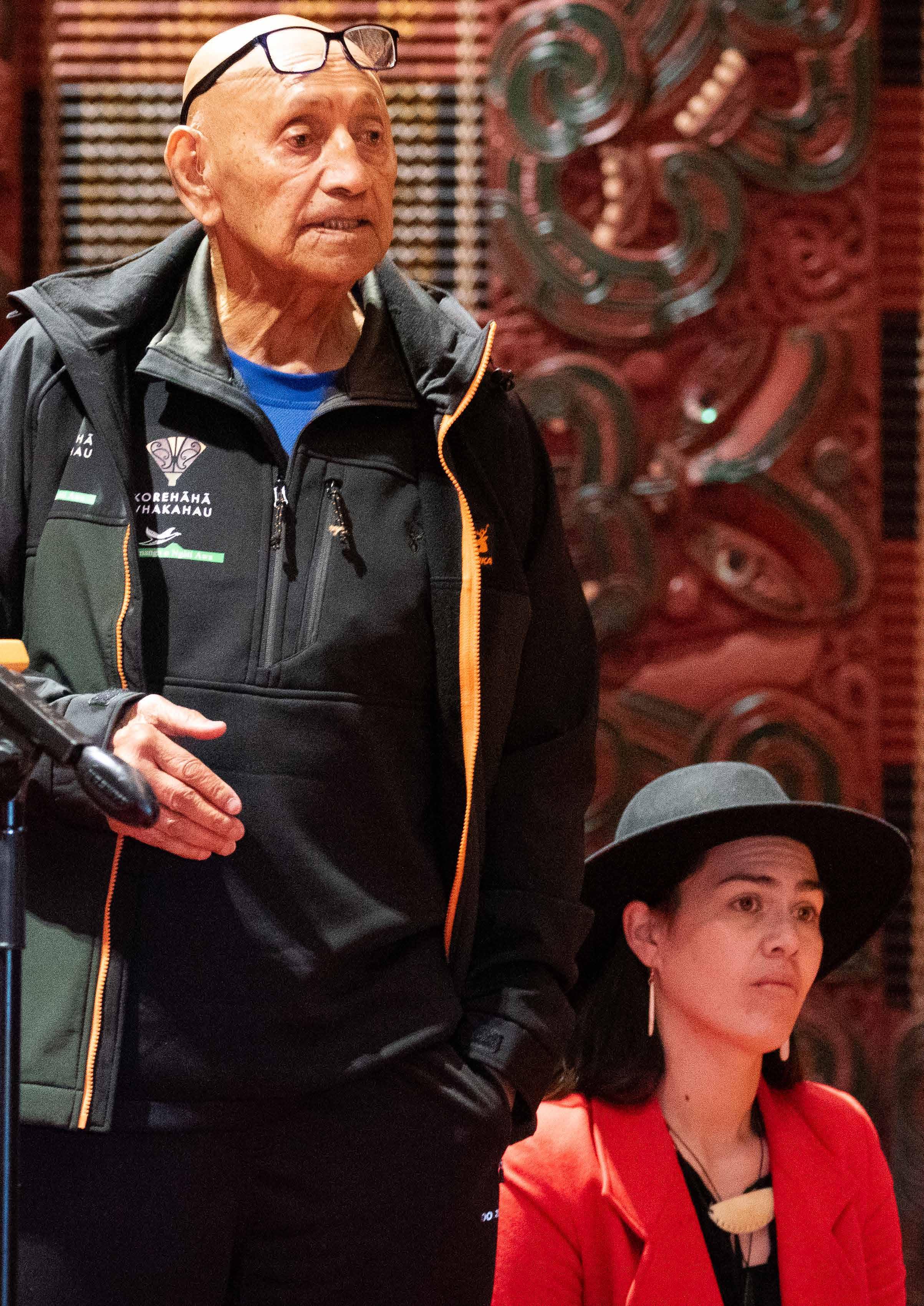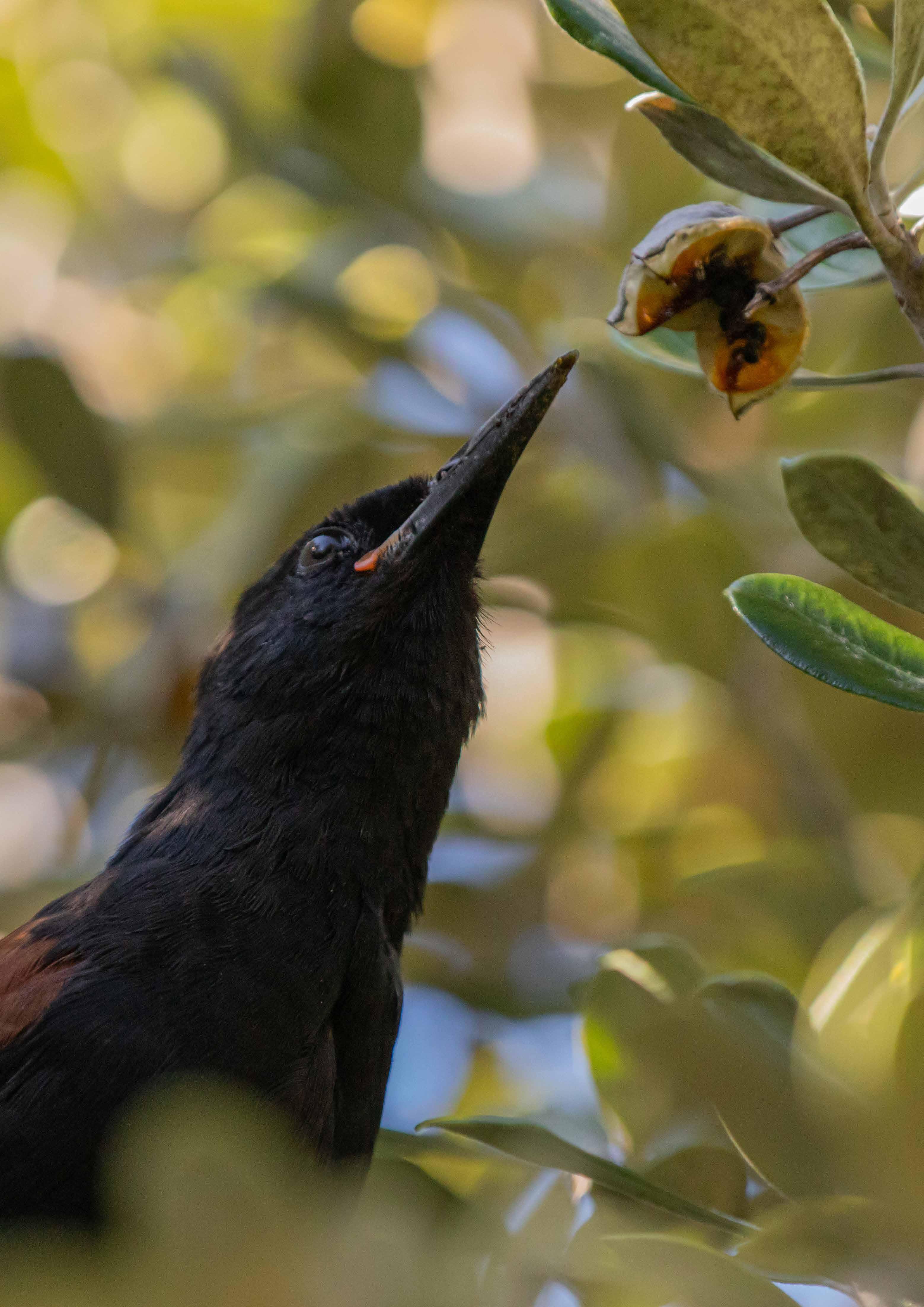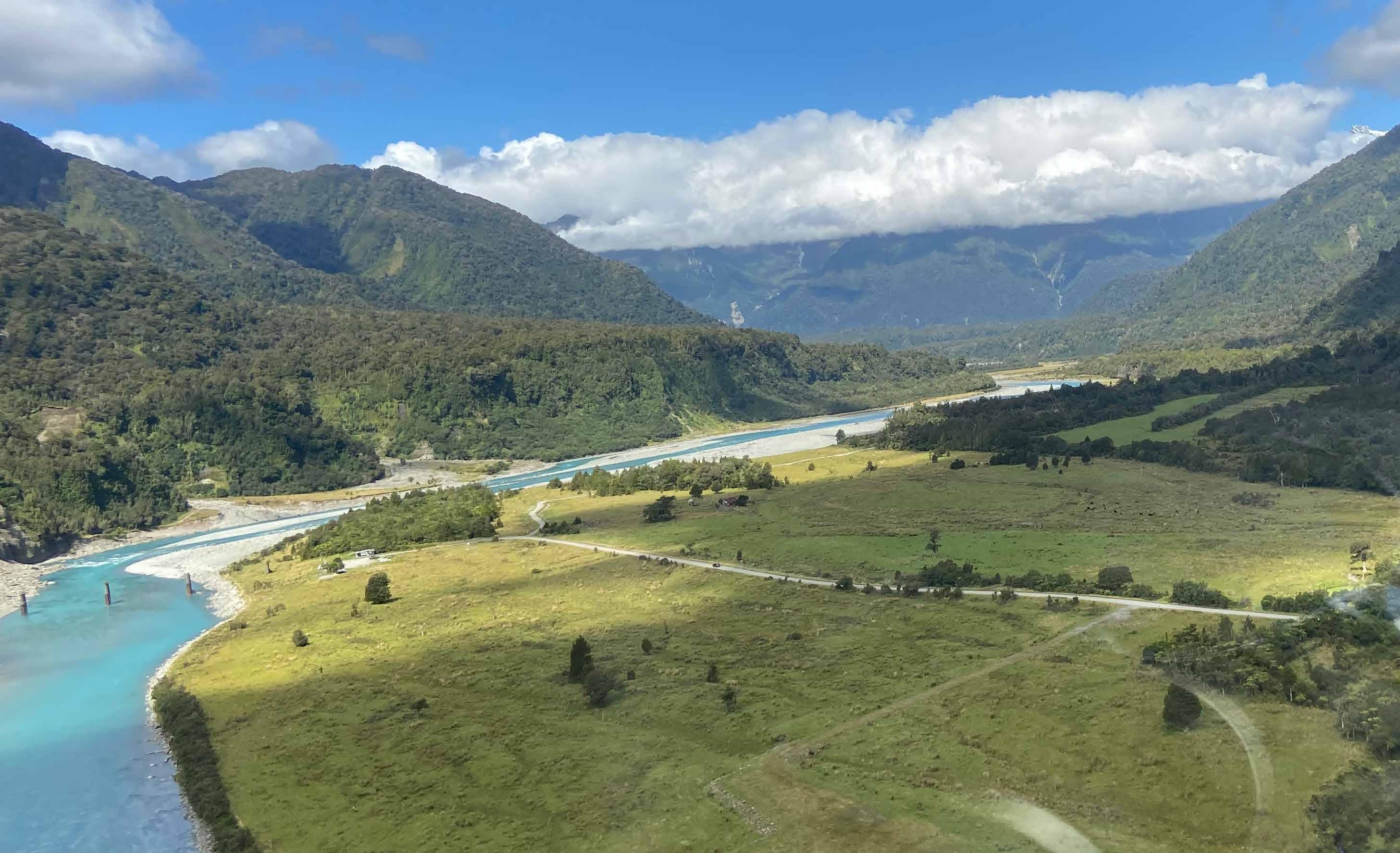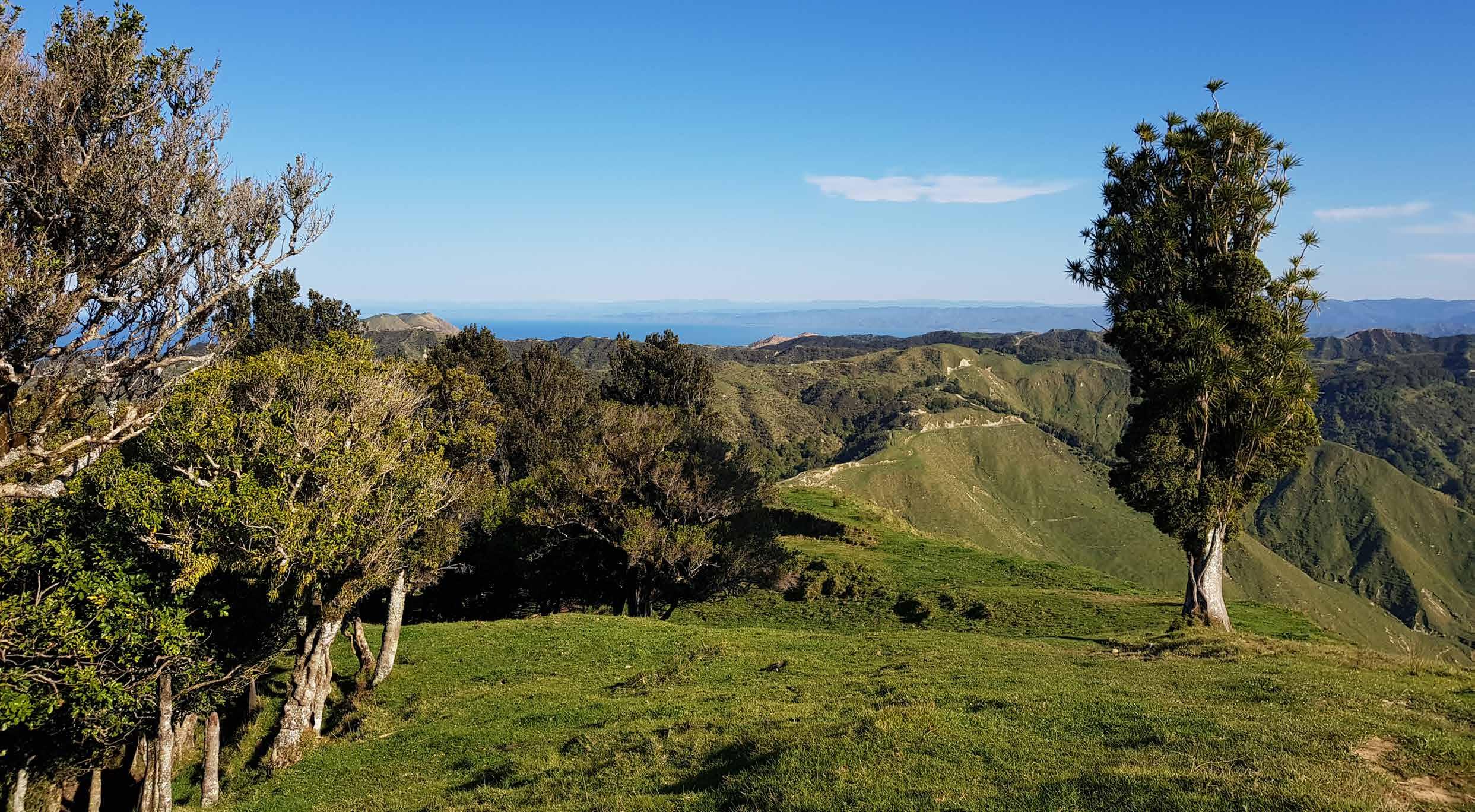
17 minute read
About Predator Free 2050 Limited
Te Tiriti o Waitangi
We recognise the special kaitiaki role that Māori play in managing our natural resources, as well as our responsibilities under te Tiriti o Waitangi. We believe the strength of our relationships is crucial to the kaupapa succeeding in the protection and restoration of our taonga species in Aotearoa New Zealand. At Predator Free 2050 Limited, we have begun our journey to embed Te Tiriti o Waitangi and its principles into our organisational values so that they become our fundamental way of operating. We are building our understanding of Te Tiriti and exploring how the principles of partnership, participation and protection can be applied in each of our workstreams. In the coming year we will recruit a te ao Māori advisor to support us in our journey. We promote partnership by requiring all of our funded landscape projects to partner with iwi or hapū, and we support iwi and hapū to develop their own predator free projects. Through the Korehāhā Whakahau project, Predator Free 2050 Limited is supporting the aspirations of Ngāti Awa to restore te taiao and equip kaimahi with transferable skills to support their whānau. We have supported Ngāti Awa to plan and host a wānanga for our landscape projects which is focused on supporting the projects to engage and work with mana whenua and to better understand the role of mātauranga Māori in predator eradication work. This was originally scheduled to take place in March, but due to Covid-19, was moved to early September 2022. We have collaborated to develop two more iwi-led projects, one in Te Urewera, led by Ngāi Tūhoe, and one in Kaipara, led by Te Uri o Hau.5 The Aotea project is now iwi-led also, by the Ngāti Rehua Ngātiwai ki Aotea Trust, and we are updating our funding agreement accordingly. We have also funded a research project for Ngāti Awa to look at how local knowledge, coupled with the latest innovations in technology, can be applied to pest eradication. Further research funding that supports Te Tiriti principles:
Advertisement
Capability Development (Alana Alexander): Māori capability development and Māori-directed genomics research, with strong iwi and hapū engagement.
Science for Technological Innovation National Science Challenge (SfTI): will include a Māori researcher exploring how mātauranga Māori and te ao Māori can and should support and drive predator detection.
Genomics Aotearoa: includes Māori researchers assessing attitudes to the genetic work with particular emphasis on understanding relevant mātauranga Māori.
5. The Waikaremoana project agreement with Ngāi Tūhoe was terminated in September 2022 with the agreement of both parties.
Highlights to 30 June 2022
Landscape projects Science and research
Predator Free Whangārei – eradication work has begun around Whangārei Heads Peninsula.
Taranaki Taku Tūranga – Towards PredatorFree Taranaki – Removed possums from two blocks of over 1,000ha and are in incursion and response phase. One in five households in New Plymouth are involved in the trapping programme.
Pest Free Onetahua – Feasibility study complete and detailed operational planning underway.
Predator Free South Westland – 43,600ha or 45% of the South Westland project area is actively managed for elimination of rats, stoats and possums. Te Korowai o Waiheke – Stoat eradication on track with remaining numbers very low. Rat eradication trials started.
Korehāhā Whakahau – Moving through the project area, removing possums as they go. They are currently operating in over 1700ha of the project area.
Predator Free Hawke’s Bay – Nearing completion of phase 1 to eliminate possums from 14,600ha of the Māhia Peninsula.
Predator Free Wellington – Eliminated stoats, weasels and Norway rats from the Miramar Peninsula, ship rats not far behind.
Predator Free Te Kinga – Developing a kea friendly trapping solution for the protection ring around and on Te Kinga, and monitoring.
Pest Free Banks Peninsula – Operations have begun on Kaitorete, and preparations for beginning the possum eradication on Te Pataka o Rakaihautū — Banks Peninsula itself are well advanced.
1080 ZERO
New 1080 to Zero approach now driving elimination at significant scale in South Westland, by Zero Invasive Predators (ZIP).
Development of a world-leading landscape genetic connectivity model for stoats, telling us how they disperse across the landscape, led by Manaaki Whenua.
Multi-national collaboration begun to quantify carbon benefits from predator eradication.
Products and innovation
620 4 of these landscape projects are iwi-led. 7
landscape projects supported in the year to 30 June 2022. Including two new projects funded by Jobs for Nature this year and expansion funding granted for Predator Free Dunedin. PF2050 Limited sponsored products now available for use by projects, including long-life lures, highinteraction traps, thermal cameras with artificial intelligence (AI), and remote communications. Better understanding of target species through world-first high-quality full genome sequencing of kiore (Pacific rat), led by Genomics Aotearoa.
Effective technique developed for targeting last stoats in an area with a single poisoned rat as bait, by ZIP.
5
research outputs delivered.
18
new research projects funded.
New PoaUku long-life ceramic lures experiencing good sales. Predator Free South Westland deployed the new ZIP Backcountry Camera to reduce the need to check trap lines. NZ AutoTraps has now sold 10,000 AT220 self-resetting traps to date. 11 new tools and 4 best practice guidelines for use of tools, from 8 different providers, received PF2050 Limited funding.
451,000ha
covered by current operations.
7
6. Rangitoto Birdsong funding withdrawn Nov 2021 (not terminated). Waikaremoana and Predator Free Southland (Awarua) project agreements terminated Sept 2022.
Public support
Tīeke / South Island saddleback. Photo by Shaun Lee.
Our Outcomes
This section reports against the three key areas of our Statement of Performance Expectations (SPE): new landscapes, new partners and new science.

Progress towards the Predator Free 2050 goal
We are contributing to the national 2025 targets, and our work will play an important role in achieving these.
National 2025 target PF2050 Limited’s contribution to target as at 30 June 2022
By 2025, increase by 1 million hectares (compared with 2016) the area of New Zealand mainland where predators are suppressed, through Predator Free 2050 projects.
By 2025, demonstrate that predator eradication can be achieved in areas of mainland New Zealand of at least 20,000ha, and that these areas can be defended from reinvasion without the use of fences. By 2025, whānau, hapū and iwi will have identified sites of importance for predator eradication, and at least five eradication projects led by whānau, hapū and iwi will be underway across the country. By 2025, develop a breakthrough science solution that would be capable of eradicating at least one small mammal predator from the New Zealand mainland.
By 2025, eradicate possums or mustelids from at least one New Zealand city.
By 2025, effective tools and knowledge will be available to achieve predator eradication on farmland. The landscape projects supported by the Company are making a significant contribution to this goal and are forecast to be working on over 823,000ha towards eradication by 30 June 2023. As at 30 June 2022, landscape projects were working on 451,000ha towards eradication. Predator Free South Westland is managing 43,600ha for elimination of rats, stoats and possums. Predator Free Hawke’s Bay is on track to eliminate possums by December 2022 across the Māhia Peninsula (14,600ha).
Four projects are currently iwi-led: Korehāhā Whakahau by Ngāti Awa, Waikaremoana by Ngāi Tūhoe, and Pest Free Kaipara by Te Uri o Hau.8 Ngāti Rehua Ngātiwai ki Aotea Trust is leading Tū Mai Taonga (Aotea Great Barrier) with the transfer of the funding agreement currently underway.
The Company’s first research strategy drove the underpinning outcomes (e.g. predator genomes) needed to enable the most likely research pathways that will achieve this goal (e.g. cost-effective specific toxins, chemical reproduction suppressants, biocontrol and genetic control). Our second research strategy is building on this foundation to provide the breakthroughs. Wellington has eliminated stoats, weasels and Norway rats from the Miramar Peninsula, with ship rats not far behind. Dunedin is on track to remove possums from Otago Peninsula by September 2023. The Company has invested in the development of 7 new products that are already available, and a further 19 tools and 4 best practice guides are on track for completion by December 2024.
New landscapes
In the year ending 30 June 2022, we supported 20 landscape projects (including one that was paused during the year).9 As well as advancing predator eradication on a large scale, these landscape projects all have unique geographical or environmental features and generate valuable knowledge about what works and what does not. By achieving eradication outcomes, landscape projects are primarily focused on demonstrating that eradication is possible where people live, work and play, and in the absence of fences. This approach requires innovation, agility, curiosity and research. By supporting landscape projects to adopt and trial new tools, technology and innovative techniques, the Company supports a “try and fail fast” approach. The Company facilitates landscape projects to collaborate widely with each other as well as new and emerging projects, to share knowledge and lessons learned. This knowledge provides essential guidance for how we can achieve eradication on the ground at a greater scale, and it will inform the development of the national implementation plan to reach the Predator Free 2050 goal. For example, the first six projects funded – Taranaki, Predator Free Wellington, Capital Kiwi, Dunedin, Hawke’s Bay and Waiheke – were chosen to test different predator eradication techniques in urban and rural landscapes of different scales with a range of geo-physical challenges in which to achieve eradication and demonstrate defendability without fences. These projects also have different governance and partnership structures, and target species. Landscape projects are currently contributing to six of the seven national Predator Free 2050 Strategy’s 2025 goals.10
The success of these projects is critical in demonstrating proof of concept: that eradication at landscape scale is possible, in the absence of fences, where people live, work and play. We have continued to target the 2:1 co-funding ratio for Vote Conservation and Provincial Growth Fund landscape project investments, and target an average ratio of 1.5:1 for Jobs for Nature landscape project investments.11 Our involvement has been successful in leveraging other funding to increase community support, but Covid-19 has had a clear impact on public and private organisation budgets. One way we can adapt to this situation is by providing more funding support for projects in their early stages so they can get started, and then attract further investment for future years.12
Our original Vote Conservation investment of $24.3 million into seven large landscape projects is expected to leverage co-investment and operational commitments of $66 million, a ratio of 2.7:1.13
In 2019, we received a commitment of $19.5 million from the Provincial Growth Fund to facilitate new cofunded large landscape projects in provincial surge regions (for five-year terms) and to accelerate investment in new eradication products (for delivery within three years). From its $37 million investment to date from these two funding streams, $103 million of total operational commitment has been generated with co-funding from local government, landowner and philanthropic support. Through Jobs for Nature funding in FY23, we are supporting 14 landscape projects (2 new projects in FY22), in addition to product development, research and capability investments. Funding agreements were signed with Auckland Council to establish and lead the Kawau Island project in July 2021, and with Environs Holdings Trust to establish the Kaipara project, led by Te Uri o Hau, in August 2021. Due to this expanded funding portfolio, we have been able to fund a combined total of 20 large
Selection criteria
Wellington – mustelids and rats, urban environment Waiheke – mustelids, island with a high residential population and rural environment Capital Kiwi – mustelids, rural environment
Dunedin – possums and mustelids, urban and periurban environment Hawke’s Bay – possums, Mahia Peninsula in a rural environment Taranaki – possums, mustelids and rats from native forest and farmland
9. Predator Free 2050 Limited made a decision in November 2021 to withdraw its current funding support of $900,000 for the Rangitoto Birdsong stoat eradication project on D’Urville Island due to uncertain land access permissions and a lack of secure co-funding. The board retains its support for the project in principle and is open to funding the project at a future date on the basis that the Trust meets our criteria, as a standalone project or part of a wider Marlborough Sounds landscape project if that became an option. The funding agreement was not terminated.
10.
Towards a Predator Free New Zealand – Predator Free 2050 Strategy, Department of Conservation website – also see p.15.
11.
For the co-funding calculation, see p.58.
12. The Company has not committed to any funding agreements beyond the appropriation term of the current funding streams.
13. Our total investment is $24M, leveraging forecast co-investment commitments of $66M, a ratio of 2.7:1. Because co-investments are forecast, the ratio may go up or down. The co-funding ratio has been calculated over the life of each of the seven large landscape projects, and across the portfolio rather than at an individual project level, and includes all co-funding from financial contributions and in-kind contributions except any public service entities, as defined on the Public Service Commission website.
The 19 large landscape projects currently operating are working across 451,000 hectares at 30 June 2022. We have observed steady interest from across Aotearoa New Zealand in launching new projects, and have received enquiries about funding from five large consortia. We are working through these enquiries to see which may progress to our formal funding pipeline. As well as affecting funding opportunities, Covid-19 has presented many operational and international supply chain challenges for projects, leading to some delays. However, many projects have overcome these challenges to continue to achieve significant progress. Some of the major achievements in FY22 include:
Predator Free South Westland: 45% (43,600 ha) of the project area is now being managed to maintain elimination of rats, stoats and possums, with advanced surveillance and response capabilities deployed to intercept any re-incursion. This includes the Perth Valley and ButlerWhataroa blocks in the backcountry and the South Ōkārito block on the coast.
Predator Free Hawke’s Bay: Nearing completion of phase 1 to eliminate possums from the Māhia Peninsula (14,600 ha).
Taranaki Taku Tūranga – Towards Predator Free Taranaki: Eliminated possums from two blocks of 1,000ha and now just dealing with incursions. They also hit their goal of having one in five households involved in the trapping programme. Te Korowai o Waiheke: The stoat eradication programme is on track, with remaining stoat numbers now at very low levels. The first of the operational trials of the rat programme started in 2022, providing essential information for eventual islandwide rat eradication on Waiheke.
Predator Free Wellington: Eliminated stoats, weasels and Norway rats from the Miramar Peninsula, with ship rats not far behind. Preparation for expansion beyond Miramar is going well, with over 7,500 individual permissions for trap locations now received.
Pest Free Banks Peninsula: Operations have begun on Kaitorete and preparations for beginning the possum eradication on Te Pataka o Rakaihautū — Banks Peninsula itself are well advanced.
Predator Free Dunedin: On track to remove possums from Otago Peninsula with a high degree of confidence by September 2023.
Korehāhā Whakahau: Moving through the project area removing possums as they go. They are currently operating in over 1700ha of the project area.
Pest Free Onetahua: Feasibility study is complete and detailed operational planning underway.
Predator Free Te Kinga: Developing a kea-friendly trapping solution for the protection ring on and around Te Kinga and monitoring.
While it is still early, we are confident that permanent predator freedom at scale is possible and defendable where people live, work and play, and in the absence of fences.
Landscape projects – the path to success
We have deliberately chosen projects for their unique landscape characteristics that cover a wide range of terrain and settings, from backcountry to rural to urban, so that they provide lessons that can, in time, be applied across the whole of Aotearoa New Zealand. These projects are led by local authorities, iwi and community entities, and target predator eradication across urban, farmed and forest landscape types, under different ownership and socioeconomic contexts. Projects work on all land tenures, including public conservation land. Each project is ambitious in scope, and different in its methods and the technology it uses. But there are also lessons that are common to all projects and settings:
Note: “Operations” is defined as areas where elimination and buffer zone suppression activity is currently taking place (such as trapping, baiting, surveillance, monitoring, device network establishment, field trials, etc) and/or where preliminary work such as discussions with landowners for property access permissions is happening in advance of elimination activity. It excludes desk-top feasibility studies and wider community engagement and communications. Trust and relationships are priceless. Each partner needs to enter into discussions with deep respect for mana whenua, landowners and the community.
Open communication and respect for everyone’s contribution and perspective are fundamental to success.
Eradication and suppression are very different management goals and require different techniques. Keeping the focus on what is needed to achieve eradication is crucial. For example, more than one tool or technique may be needed to find the last hard-tocatch animals, devices may need to be closer together, and monitoring every home range will be necessary to ensure eradication has been achieved.
Newer projects can learn much from established ones about these techniques, and we have recruited a knowledge broker to improve the communication of information between projects.
Applying these techniques with precision and discipline will help projects advance much more quickly.
Projects should be ambitious in their scope, and communicate that ambition to their communities. We are regularly surprised at the way support can be awakened in the community with good engagement and storytelling. Often funding will be forthcoming once visible activity has begun.
An agile and innovative mindset is absolutely essential, and teams should always expect the unexpected.
We say, don’t think outside the box – throw the box away altogether


Māhia Peninsula located on the east coast of the North Island makes up one of three main areas covered by Predator Free Hawke’s Bay. Photo by Natalie de Burgh.
Hawke’s Bay
Possum elimination in sight
In 2018, Predator Free Hawke’s Bay was the second Predator Free 2050 Limited project, but the vision of restoring the landscape had begun to take shape many years before. The project Poutiri Ao ō Tāne launched in 2011, and was the first in Aotearoa to focus on widescale predator control and ecological restoration on farmland. Its sister project Cape to City, launched in 2015, also focussed on restoration in a farmland context, in a coastal landscape with an extensive plateau. The success and lessons learned helped catalyse the Government’s Predator Free 2050 announcement in 2016. In 2018, these projects gained funding to start Whakatipu Mahia, a possum eradication project. The first phase has focussed on removing possums from 14,600 hectares of land on Mahia Peninsula. With the help of local innovation and community support, it is set to be one of our first projects to successfully reach eradication in the near future. Project co-ordinator Natalie de Burgh says “We’ve seen a huge breadth of innovation, simple low-cost solutions have been game changers. Everything from putting Velcro on bait stations to see if it’s a possum or rat visiting, mounting bait stations on battens in areas with no trees, and using bungee cords to secure bait stations to trees when working in exotic forestry.” Preparation is already underway for the next stage of the project, to maintain these impressive gains into the future.
PROJECT CASE STUDY
Predator Free South Westland’s project area is diverse and vast with wild rivers that aid as boundaries for the predator free mahi. Photo by Nathan McNally.
South Westland
Diversity supports biodiversity
Before Predator Free South Westland (PFSW) was formed in 2021, Zero Invasive Predators (ZIP) was already working in the Perth Valley, developing an approach to eliminate rats, stoats and possums from 12,000 hectares of rugged back country. ZIP have now successfully eliminated predators from the valley and are maintaining the site as predator free, while working to scale up across 100,000 hectares The project area now includes the Perth Valley, the townships of Franz Josef, Ōkārito and Whataroa, along with backcountry and lowland forests, farming areas, and lagoon wetlands. The Alps, big rivers and ocean form boundaries against reinvasion. Locals are starting to see an increase in birdlife including more kākāriki, kea, and kererū, not just in the back country but also where people live and work. PFSW now has a team of 25 based on the West Coast, and the wider ZIP team throughout New Zealand contribute to the project, along with local contractors. Staff skills include engineering, lab testing and business support functions such as modelling, GIS and communications. When it comes to recruitment, Operations Director Duncan Kays says diversity is the key to success: “If we all think the same way there’s likely no conflict, but you also don’t progress. Building a good functional team means being open to discussion and new ideas. A lot of what we do is problem solving and finding a new way to work, not just planning and delivery”.

